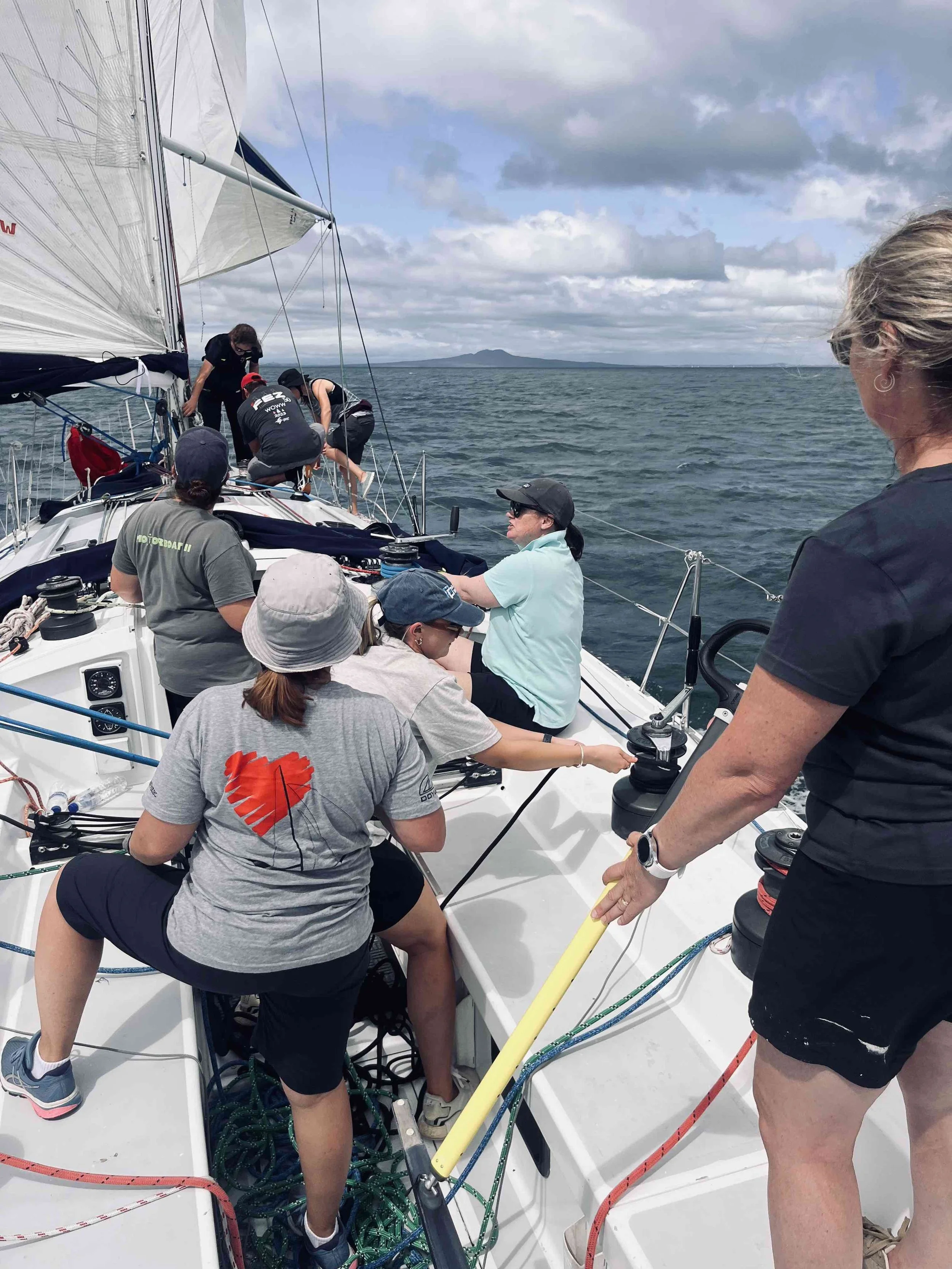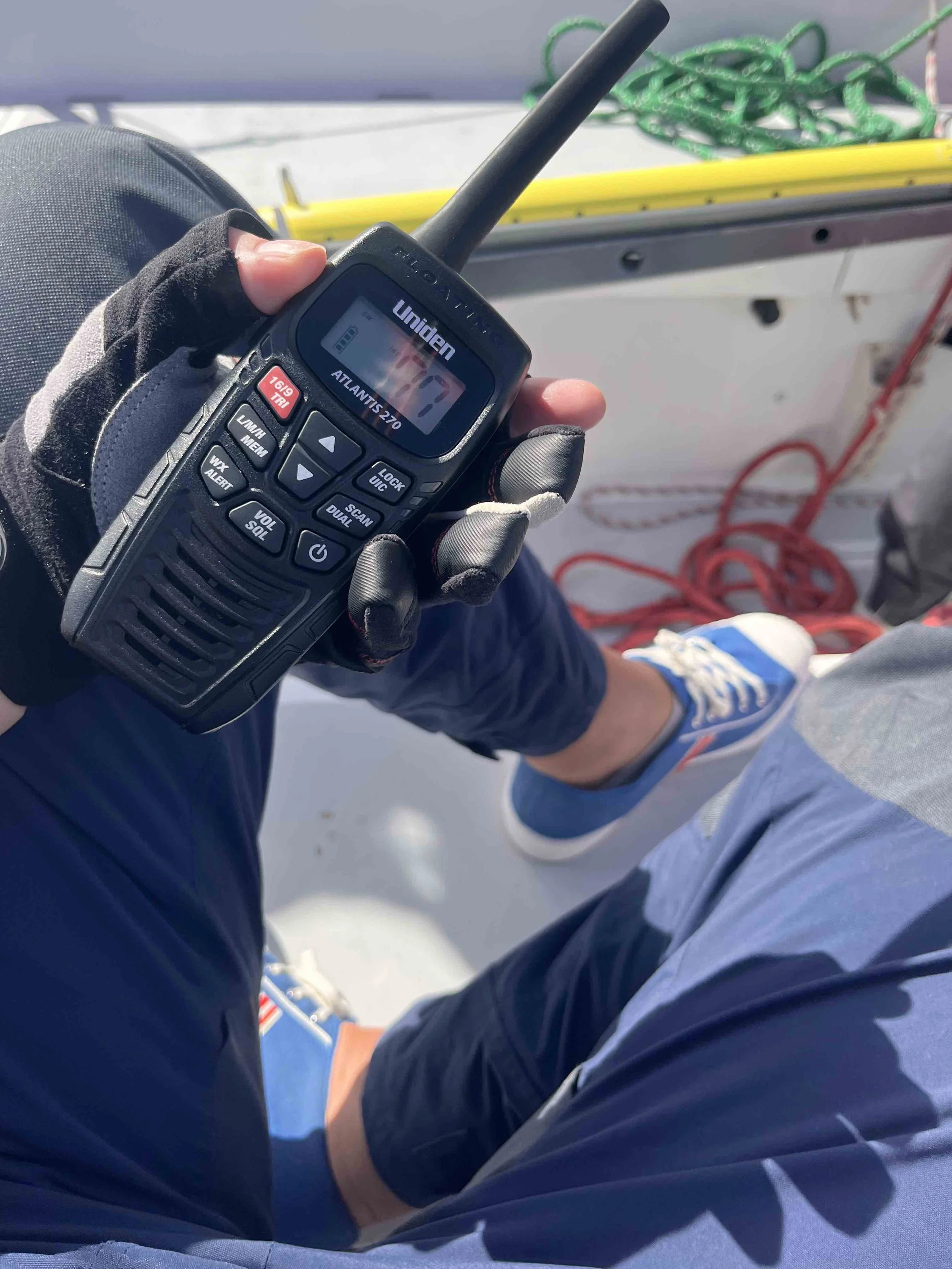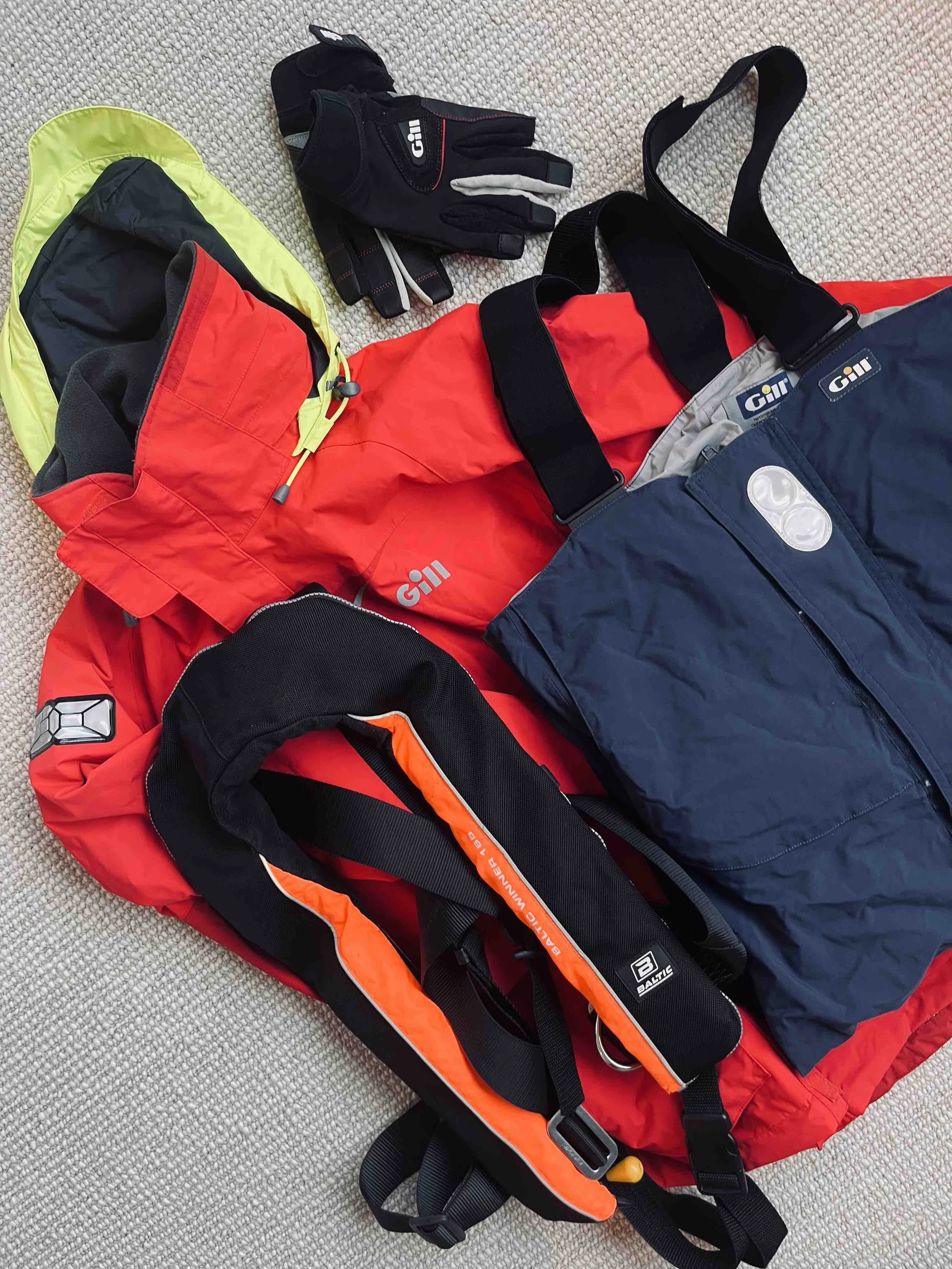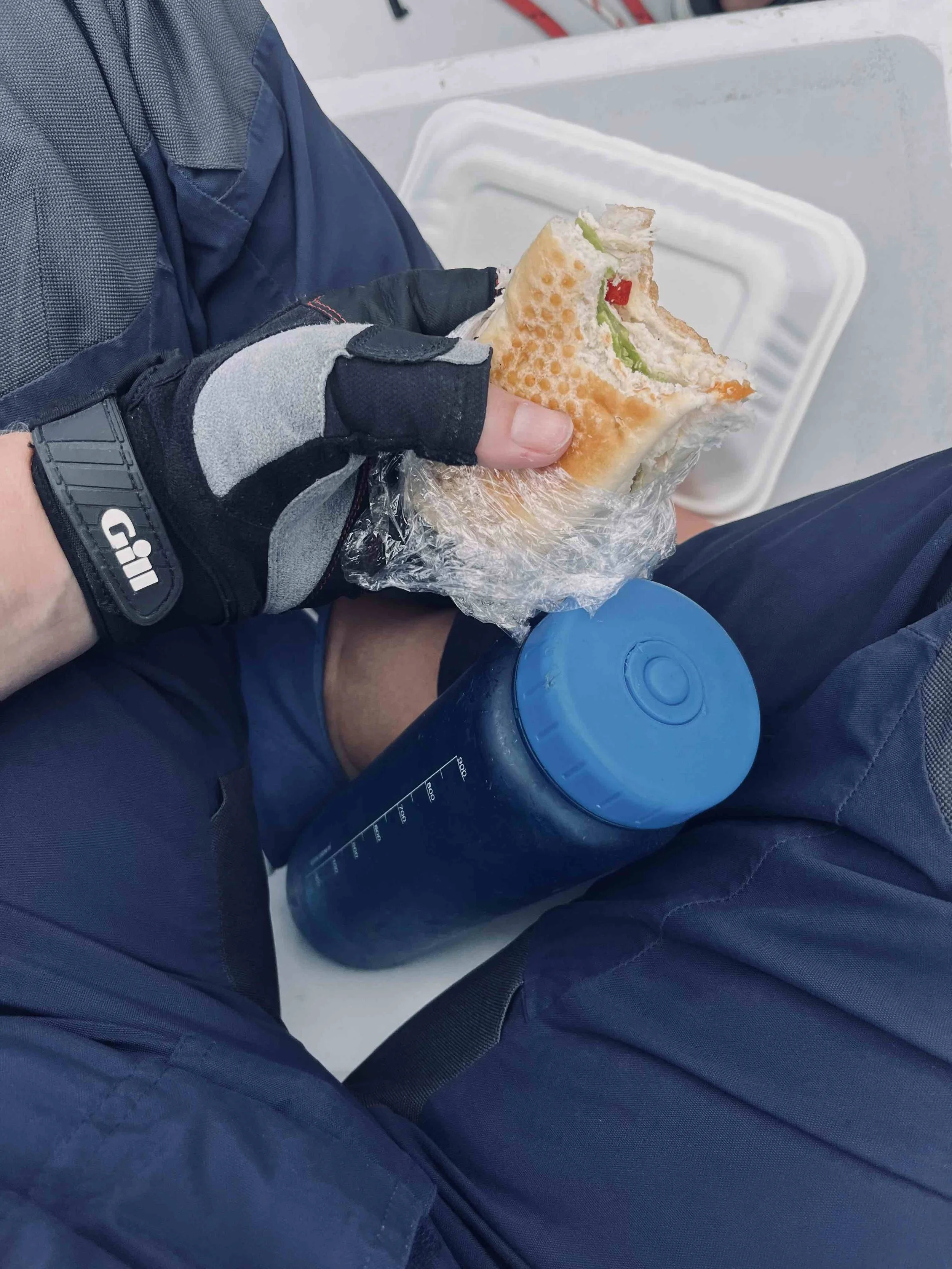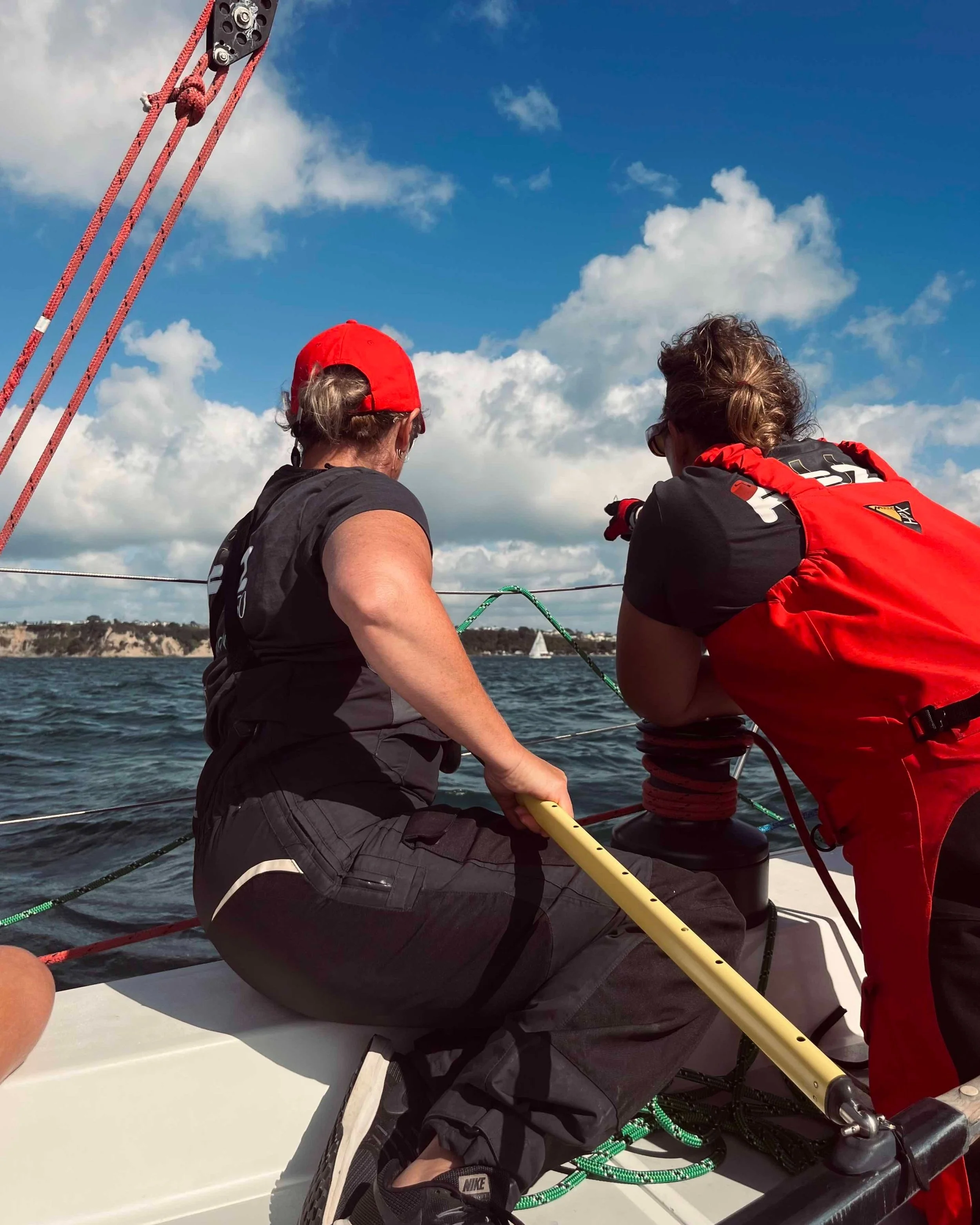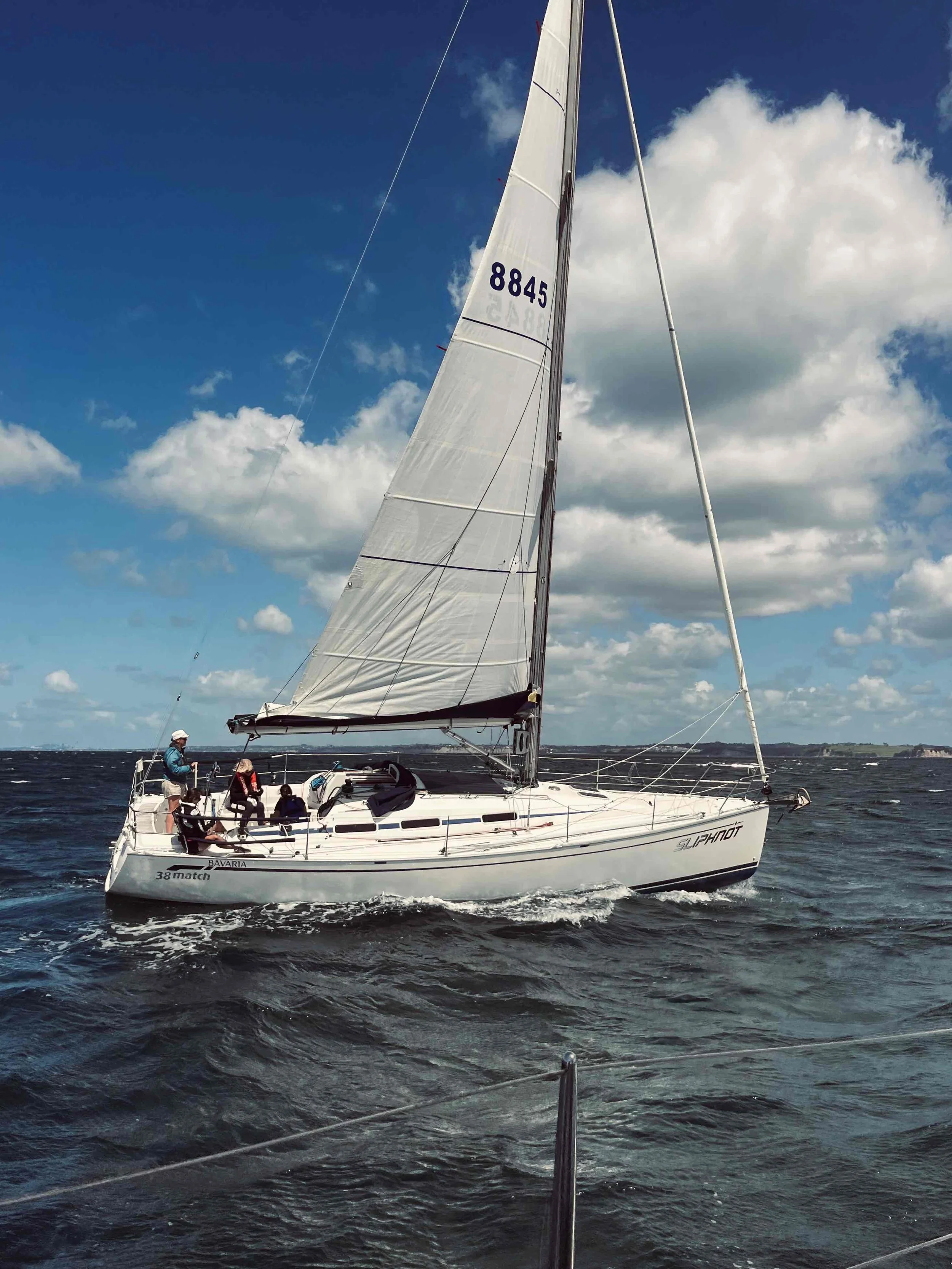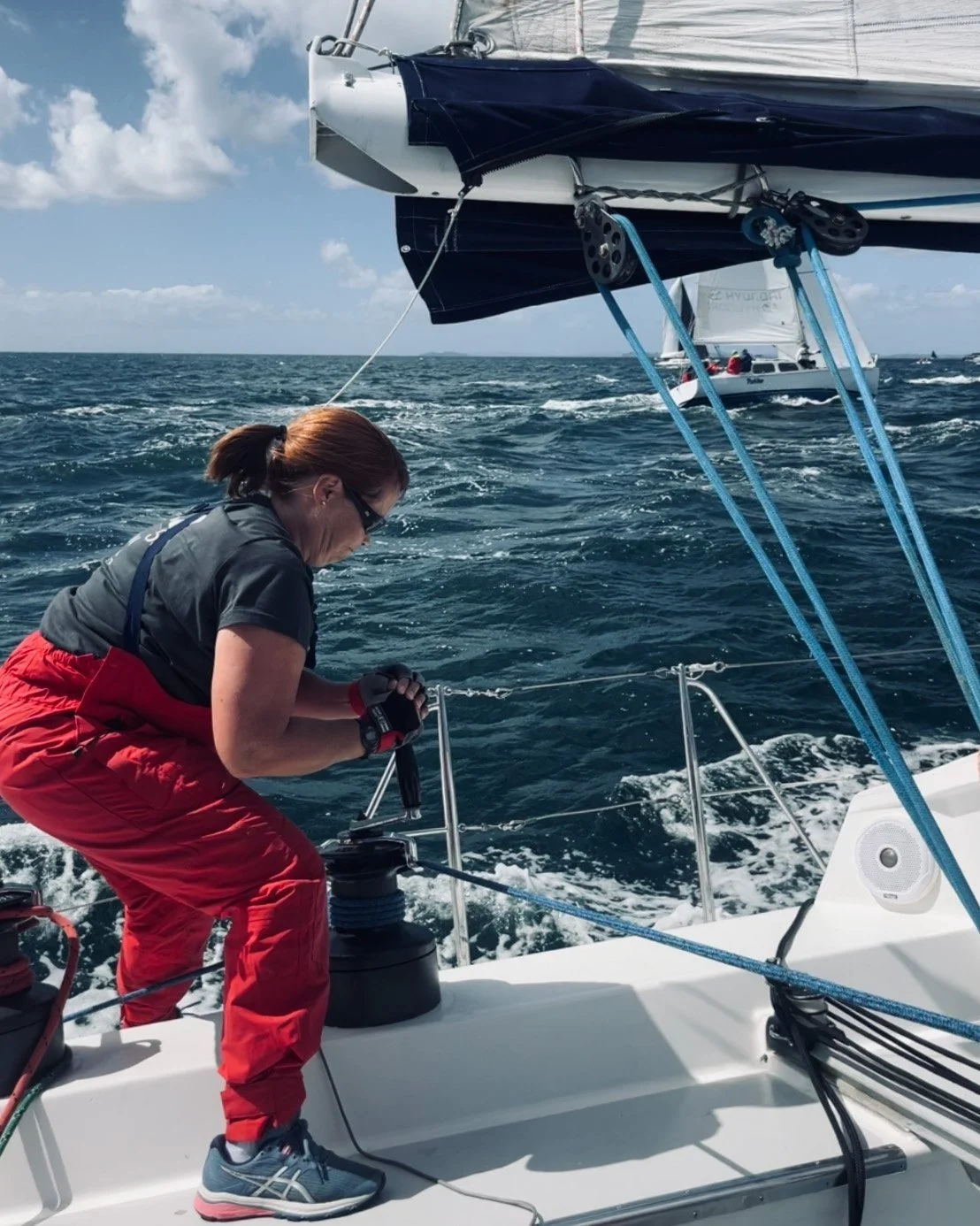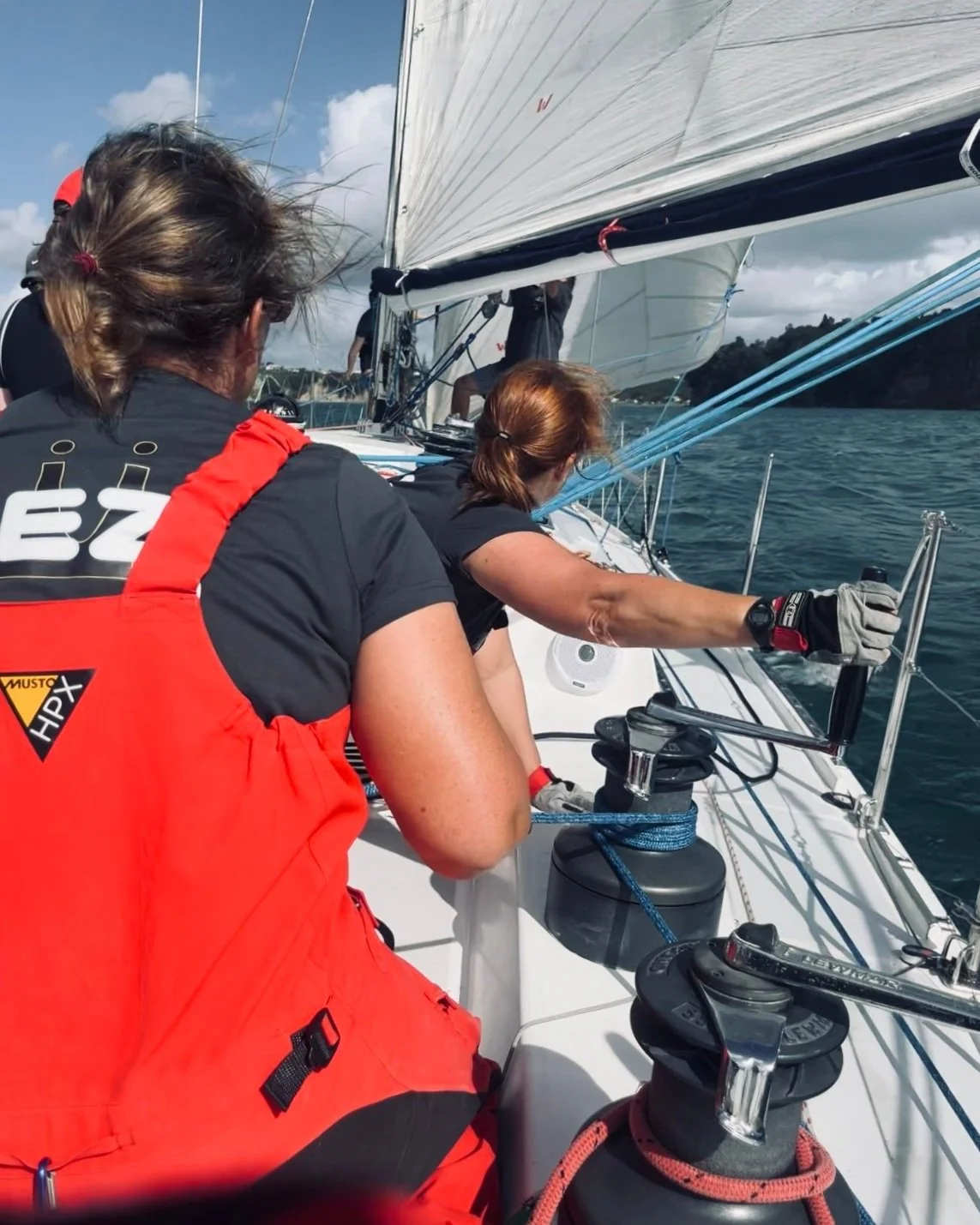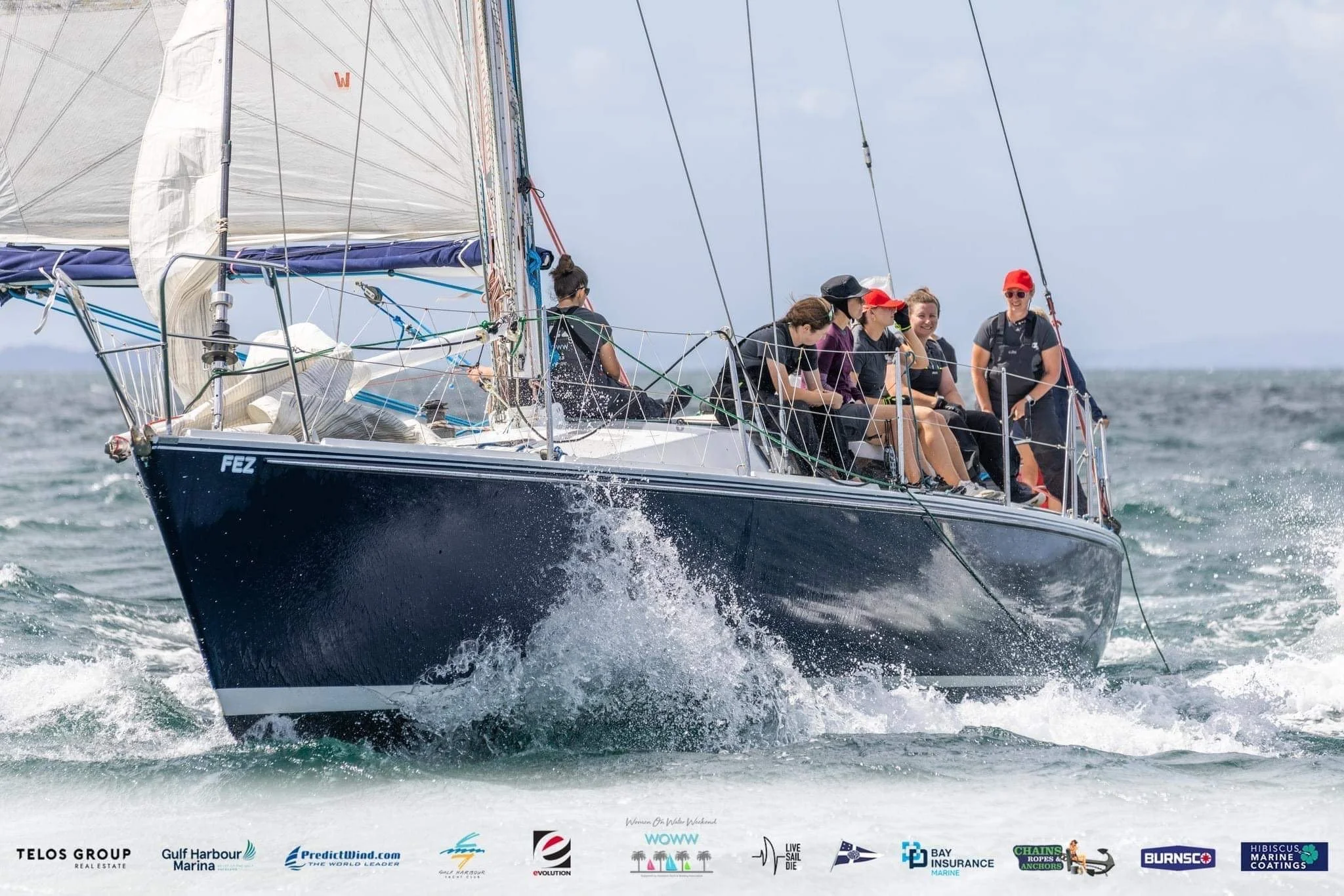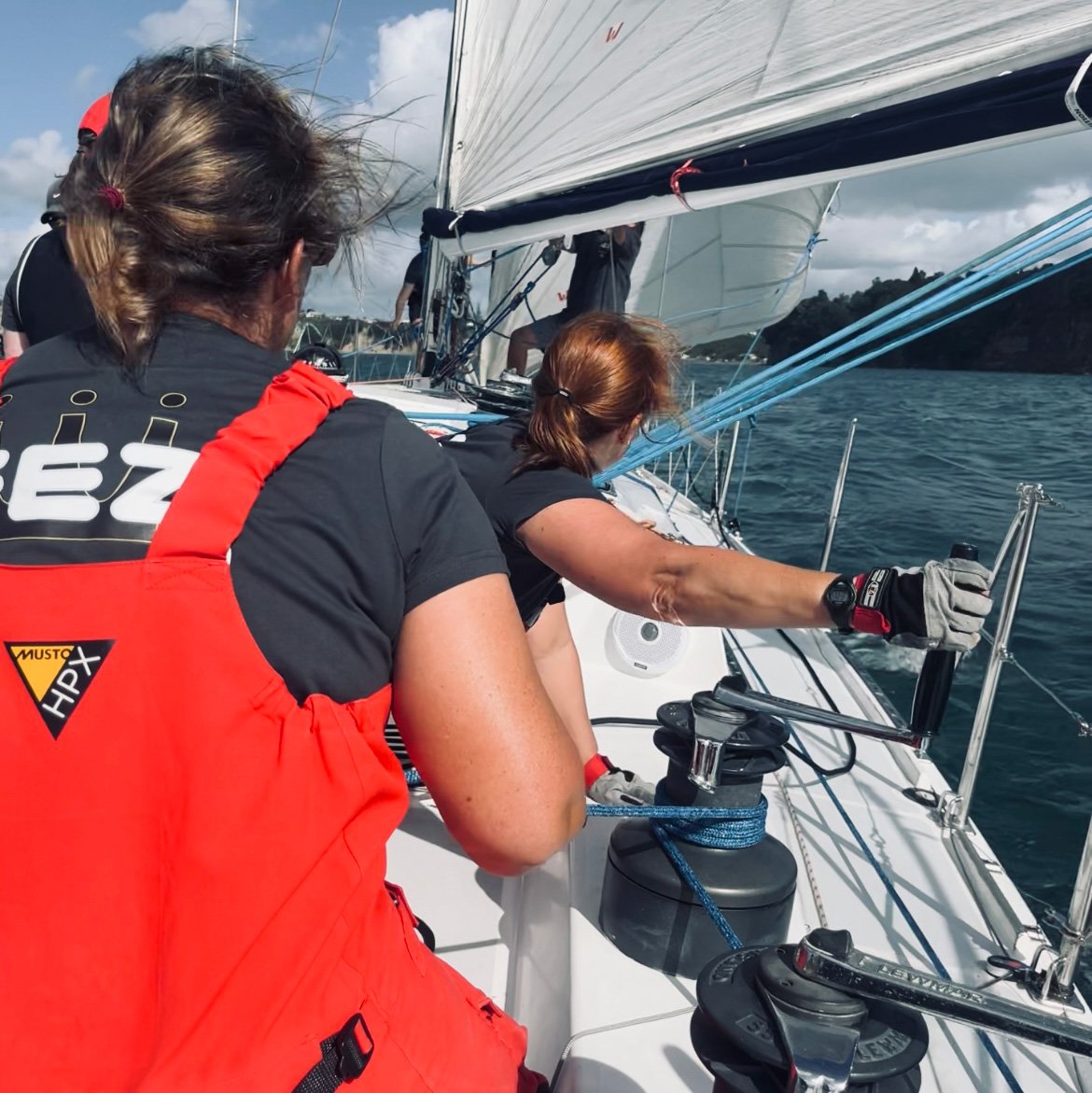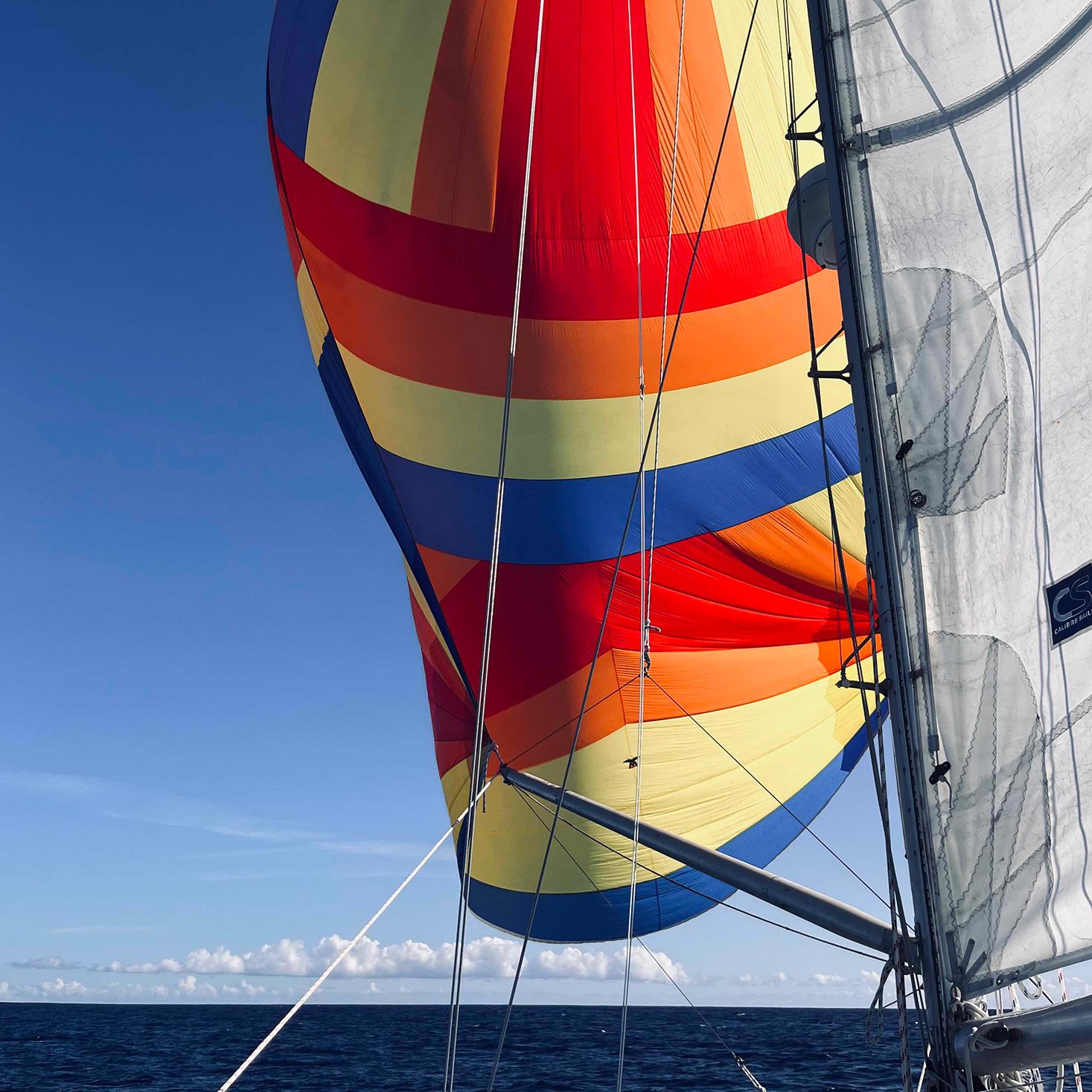How To Get Race Ready For Your First Women’s Regatta
Racing underway! Photo credit: Live Sail Die
Saltwater Journal is reader supported.
When you buy through our links we may earn an affiliate commission (at no extra cost to you)
Whether you're driven by curiosity about sailing, a thirst for competition, or a desire to break free from the everyday, taking part in a women’s regatta will give you an unforgettable sailing experience on and off the water.
There are plenty of local and national events being held all around the world, providing an awesome opportunity to meet new people and connect with like-minded women who share a passion for sailing. But if you’re a novice sailor or you’ve just signed up for your first regatta, it’s easy to feel totally out of your depth — to be honest, the whole racing scene can be a bit daunting.
If you’re worrying “What will it be like? What do I need to take? What do I wear? What are the different crew roles? What if I hate it?” you’ve come to the right place! Here you’ll find an extensive beginner’s guide to getting race ready so you have a positive regatta experience, and (hopefully!) want to do another one.
After reading this, you can feel confident you know what to expect out sailing, and can focus on getting ready, and having a good time.
Contents
Crew positions: Who does what?
What to actually expect (real talk)
Note: The photos throughout this article are from the Women on Water Weekend regatta hosted by Gulf Harbour Yacht Club, New Zealand — I raced on a Warrick 50 called ‘Fez’. Professional photos by Live Sail Die, all other snaps are my own :)
All smiles on deck. Photo credit: Live Sail Die
Why should you give a Women’s Regatta a go?
If you’re on the fence about taking part in an all women’s regatta, I encourage you 100% to take the plunge and sign up! It’s super inspiring to see boats being helmed by women and absolutely owning it 👑. Age is no barrier. Sailing is one of the great sports where you’ll meet women from all walks of life, young and old, using their skills and experience to work together and try and win! And you can’t help but feel good about being part of the team. Keen? Let’s crack on…
Basic sailing race terms
Racing terminology is like learning a new language — it takes time, and repetition and practice. However, there are some key terms to learn first that are most important for wind direction, boat and sail position on a course. These are:
Beat — sailing upwind toward the windward mark
Run — sailing downwind away from the windward mark
Reach — sailing perpendicular to the wind, at an angle between a beat and a run
Tack — changing direction (left or right) and turning the bow through the wind - the sails move from one side of the boat to the other
Jibe (Gybe) — changing direction (left or right) while sailing downwind, so the stern turns through the wind and the sails change from one side of the boat to the other
Port — when facing the bow (front of the boat), the left side of the boat is called port
Starboard — when facing the bow, the righthand side of the boat is called starboard
Windward — the side of the boat the wind hits first
Leeward — out of the wind, the side more protected
Layline — the imaginary line that a boat must sail to in order to round a mark without tacking or jibing
Mark rounding — sailing around a buoy or other fixed object on the course
See more information on everyday sailing terms, a detailed article on Port and Starboard, or this larger glossary of racing terms.
Day before the regatta — crew casual & working to pole out the Gennaker sail.
Crew positions: Who does what?
The exact crew roles can vary depending on the type/design and size of yacht, the number of crew onboard, and the specific race rules. When you sign up for the regatta you’ll usually need to say which role you’re comfortable in, but if you have no idea, read on. It’s a good idea to talk to the skipper of the boat you’re assigned to and have a chat about your experience. Crew will often switch roles for different races during the regatta too, so you may get to experience more than one position onboard.
These are the primary positions commonly found on a racing yacht:
Skipper (Helmsperson): The skipper is the person in charge of the yacht and is responsible for making strategic decisions during the race. They steer the yacht and ensure it follows the designated course. The skipper also manages the overall coordination of the crew and communicates with other boats and the race committee.
Tactician: The tactician is responsible for making tactical decisions during the race, such as choosing the best course to sail, considering wind shifts, currents, and other factors. They work closely with the skipper to develop and execute the race strategy.
Mainsail Trimmer: The mainsail trimmer adjusts the mainsail's shape and tension to optimize its performance. They work closely with the skipper and tactician to maintain the boat's balance and speed.
Headsail Trimmer: The headsail trimmer manages the jib or genoa sails. They adjust the headsail's shape and tension to maximize its efficiency and work with the mainsail trimmer to balance the boat.
Trimmer — Spinnaker/Gennaker: If the yacht is flying a spinnaker or gennaker sail then there will be someone to manage the trimming of these, and control the sail pole position and angle, which affects the sail’s shape and performance.
Bowperson: Manages the front of the yacht, including hooking up the sails for jib and spinnaker sail changes and sail drops and keeping the bow area clear of obstructions.
Grinder/Winch Operator: Grinders or winch operators are responsible for turning the winches to control the sails and generate power for various boat functions. They need to be strong and skilled at quickly grinding in and releasing lines.
Floater/Utility Crew: These crew members may be assigned various tasks as needed, including helping with sail changes, moving ballast (sitting on the high-side to help balance the boat), or assisting other crew members. If the yacht has a rig with running backstays one person may be assigned to the ‘runners’ — that is releasing and bringing on the running backstays during tacking and jibing. Floating roles can be flexible and depend on the boat's specific needs.
Navigator: The navigator is responsible for plotting the yacht's course using charts and electronic navigation equipment. They consider factors such as wind, currents, and the racecourse to help the skipper make informed decisions. In a shorter race this is often done by the tactician.
Tailer/Tailers: Tailers assist with handling lines and ropes, especially during manoeuvres like tacking and gybing. They help manage the lines as they are adjusted and eased.
Relaying to the race committee how many POB (People On Board)
How does a race work?
It’s helpful to have an overview of how the regatta weekend and race works. Here’s the usual sequence of events:
Pre-race
Registration and Check-In: Before the race, participating boats must register and complete any necessary paperwork, including providing proof of insurance and safety equipment.
Briefing: A race briefing is held before the start of the race to communicate important information to all participants. This includes details about the course, rules, safety procedures, and any specific race instructions.
Course Setting: The race committee sets the course for the race, which may include a combination of marks, buoys, and navigation points. The course can be in various formats, such as windward-leeward, triangular, or coastal.
Race
Start Line: Boats line up along the starting line, typically with one end designated as the committee boat and the other as the pin end. Races often use a countdown sequence with flags and horn signals to indicate the time remaining until the start.
Starting Sequence: The starting sequence begins with a preparatory signal (usually five minutes before the start) and includes flags and horns to signal the start of the race. Boats aim to cross the starting line as close to the starting signal as possible without crossing it early (which results in a penalty).
Race: Once the race starts, boats sail the designated course, navigating around marks or buoys in the correct order. Crew members work together to trim sails, make tactical decisions, and optimize boat speed based on wind and weather conditions.
Mark Roundings: At each mark or buoy, boats must round the mark in the specified direction (usually counterclockwise). Proper rounding is crucial to avoid penalties and maintain course position.
Finish Line: The finish line marks the end of the race. Boats aim to cross the finish line in the correct direction to complete the race. The finish time is recorded as each boat crosses the line.
Post-race
Scoring: Races are typically scored based on the Racing Rules of Sailing (RRS) - the definitive rules published by World Sailing which govern sailing races globally. Different races may use different scoring systems, but common methods include low-point scoring (fewest points wins) and high-point scoring (most points win).
Protest and Appeals: If there are disputes or rule violations during the race, boats can file protests with the race committee. Protests are reviewed, and decisions are made based on the racing rules.
Awards and Social Events: Party time! After the race, there’s often a prize-giving ceremony where awards are presented to the top-performing boats and crews. This is usually followed by some hearty grub and drinks all round - there’s nothing like a day of racing to get the appetite going!
What gear to bring
Drinkbottle
Sunscreen
Hat (and if needed, a hairtie — long hair can be a pain in the butt in the wind!)
Sunglasses
Togs & towel
Food — sometimes lunch is provided as part of the regatta or you may need to bring your own (see FAQ for good lunch options to bring onboard)
TIP: Stash a protein bar in your jacket pocket for between race munchies
Personal medication
Cash/cards/phone
Gear bag — try and keep your onboard gear bag as light as possible and just bring what you need onboard (wet-weather gear, lifejacket/PFD, food etc). Keep a bag onshore or in the car with anything extra you have (after-party clothes, toiletries, phone charger etc)
Basic protective sailing gear — gloves, wet weather jacket & pants, lifejacket
Lunch may be provided by the event hosts but don’t forget a waterbottle!
What to wear
This is a good question! If you wear the wrong clothes (like tight jeans and a singlet aren’t super practical), you’ll probably be uncomfortable the whole time and have regrets about the whole sailing malarkey — definitely not the aim of taking part! But you also don’t want to spend a fortune on buying new sailing gear just for a weekend (Unless you get hooked, in which case it’s a worthwhile investment…)
You can read the details on the best clothes to wear sailing here, but essentially, you want to make sure you prioritize sun protection, moisture management, and proper footwear, while also considering the weather forecast (expecting 30°C sunshine all weekend? Or 8°C rain?). Obviously, the season and weather conditions will dictate how many layers you wear for the day.
Dressing appropriately for a sailing regatta involves a balance between comfort, functionality, and safety. In the thrill of a race, no one’s thinking about fashion, it’s game on!
Here’s the essential clothing to keep you covered, comfy and confident out on the water:
Base Layers
Start with moisture-wicking base layers that keep you dry and comfortable. Choose lightweight, breathable fabrics that help regulate your body temperature. These layers should fit snugly without restricting movement. Merino wool singlets or long sleeve tops are perfect for this.
Sun Protection
Sailing exposes you to intense sunlight and reflective water surfaces. Protect your skin from harmful UV rays by wearing:
Sunscreen: Apply a broad-spectrum, water-resistant sunscreen with a high SPF rating before heading out on the water. Reapply regularly, especially after getting wet. These are the best reef safe sun-screens.
Sunglasses: Opt for polarized sunglasses that offer UV protection and reduce glare off the water. A strap helps keep them secure during maneuvers.
Hat: Wear a wide-brimmed hat or a cap with a neck flap to shield your face, neck, and ears from the sun. See the best sailing hats.
Sailing Apparel
Rash Guard or Shirt: A long-sleeved rash guard or shirt offers additional sun protection and minimizes chafing from the constant movement of ropes and equipment.
Quick-Drying Shorts or Pants: Choose lightweight, quick-drying shorts or pants that allow freedom of movement. Opt for fabrics that shed water easily and dry quickly after getting wet. Yoga or athleisure tights are a great option too.
Wetsuit or Spray Top (Depending on conditions and boat size): In colder conditions or if there's a chance of getting wet in a smaller yacht, consider wearing a spray top. These provide insulation and keep you warm when the temperature drops or during heavy splashes.
Footwear
Sailing Shoes or Deck Boots: Proper footwear is essential. Opt for sailing shoes or non-slip deck boots with good drainage and grip. Avoid open-toed shoes to protect your feet from potential injury. If you’ve got Converse shoes — or a similar white soled, canvas street shoe these will do just fine! See more great shoes for sailing.
Outer Layer
Sailing Jacket: Have a lightweight, waterproof jacket on hand. This layer protects you from rain and wind, ensuring you stay comfortable in changing weather conditions. A sailing jacket is ideal but a decent comfy rain jacket or outdoor wind breaker will work too.
Saloppettes: Sailing overalls are excellent for keeping you warm and dry but most outdoor wet weather pants will do the job for a weekend regatta.
Life Jacket or PFD (Personal Flotation Device)
A well-fitting, Coast Guard-approved life jacket or PFD is mandatory for safety. Ensure it provides freedom of movement while keeping you afloat. If you don’t have a life-jacket, talk to your skipper as they’ll sort this out for you.
Accessories
Gloves: Sailing gloves protect your hands from rope burn and blisters, providing a better grip on lines and equipment. Suprisingly, garden gloves are a great-go to for many racing sailors, so don’t be afraid to grab a pair of those (which are much cheaper!)
Whistle: Attach a whistle to your life jacket for communication and emergencies.
Watch: A waterproof watch with countdown or stopwatch features can help you time maneuvers and keep track of the race. Although, if you’re crew this isn’t essential.
Hydration
Staying hydrated is crucial. Take a drink bottle along for downtimes or between races, or use a compact, hands-free hydration pack that allows you to drink water without interrupting your movements.
Change of Clothes
Pack a change of clothes for after the race. It’s not unusual to see sailors still in their gear at the after-event, but if you’ve been doused in salt and sweat, then you’ll feel a bit more human in fresh clothes when the racing is done.
Consider Club Regulations
Keep in mind that some regattas or sailing clubs may have specific dress codes or requirements. Be sure to check the event's rules and regulations beforehand.
Plenty of tactical talk and wind shifts to spot
Fez under full power — with crew on ballast
How to be a great crew member:
Regardless of your experience, there are 6 key aspects to focus on to be a safe, effective crew member:
1. Safety First
While the focus is on performance, safety should always be a priority. Follow safety protocols and guidelines, and be prepared for unexpected situations. Wear appropriate safety gear, including a life jacket and harness. Stay mindful of your surroundings to avoid accidents.
2. Communicate clearly
Clear communication is crucial. Ensure you and the skipper understand each other's instructions, and don't hesitate to ask questions if anything is unclear. Keep communication concise and relevant, especially during critical manoeuvres. If you’re given an instruction or hear an informative statement, reply ‘copy’ — then it’s clear you’ve heard and understood. You’ll hear a lot of sailing jargon onboard — you won’t learn this in one regatta weekend! But if you’re interested in getting a head start — here’s an excellent breakdown of racing terminology and how to improve onboard communication.
3. Watch your coordination
Coordination in both senses:
Try and work in-sync with the skipper and other crew members. Synchronize your movements during tacks, jibes, and sail adjustments. Well-coordinated actions lead to smoother transitions and improved boat performance.
Hold onto something while moving around the — and stay onboard at all costs!
4. Be Adaptable
Sailing conditions can change rapidly. Adaptability is a critical trait for crew members, as you may need to take over another role, or help someone out.
5. React Quickly
Responding to instructions and/or during manoeuvres, quick reactions are essential. Whether it's adjusting sail trim, releasing a line, or shifting your body weight, prompt responses contribute to the overall efficiency of the boat and safety of the crew.
6. Stay Calm Under Pressure
Tense moments can arise, especially during close-quarter racing. Maintain your composure, and debrief once back ashore.
Carving it up — fellow boats are all focus during the race
What to expect at the regatta (actually)
You may need to help prep the boat
Many boats are cruisers in between regattas and there’s plenty to do to get the boat race ready. For starters, there’s often gear onboard that you don’t need while racing. Keeping the boat as light as possible will help it go much faster!
Some race ready boat preparation may include:
Carting loads of unneeded gear to storage shed or car eg dehumidifiers and paddle-boards, bbq and spare anchors
Emptying the water tanks
Removing the bimini and dodger (shade covers and protective screens in the cockpit/seating area)
Bringing race sails onboard
Setting up the running rigging (that’s the lines used for raising, lowering, shaping and controlling the sails on a sailing vessel — as opposed to the standing rigging, which supports the mast and bowsprit)
Loading food and drinks (making sure the fridge is ON and cold!)
Removing the sail cover
Stowing gear
Offering help and enthusiasm for being a spare set of hands to fetch, carry and run lines (even if you don’t know what they’re for yet) goes a long way to getting the job done, and is always appreciated by the team.
Before the race
Meet the skipper and crew
Prep the boat
If time and weather allows — a shakedown sail to get to know the boat
Register and get race packs
Review the course and special instructions for the weekend with the crew
Enjoy a pre-event evening at the yacht club
On the day
Arrive early and organised
Attend race briefing
Meet at the dock/berth/boat on time and ready to go
Pre-start manoeuvres underway
It can get intense
Pre-start is one of the most intense times onboard — when all boats are manoeuvring in a small space to line up the perfect run and time to the start line. Expect it to be tense, with the skipper calling for visuals on what other boats are doing, crew calling out wind shifts (what the wind is doing and how close a wind change is to the boat), someone else keeping time and counting down for the skipper, and crew quickly tacking and adjusting the boat either to kill speed (and not cross the line early) or trimming for maximum power and full-steam ahead to cross now! Other intense moments are close crosses in front or behind other boats, and rounding markers. Yachts have to react quickly to avoid collisions and there’s usually some close calls. Stories of “Wow that was close” are the best to re-live post-race!
Tip: If you’re feeling anxious — remember slow steady breaths
Sailing fast in close quarters — very exciting!
It’s exhilarating
If there are some decent winds out on the course, you’ll experience sailing at its finest — when crew work together to eke every last little bit of speed out of the boat. Seeking to align the perfect wind shift with maximum canvas up and exact sail trim — crew often pushing the yacht to its limits. The speeds are much faster and the heel is usually much greater than when out cruising — so it’s quite something to really feel on the edge — speeding through the water with the power of the wind.
As a beginner, you may feel out of your depth
If you’re new on a racing boat — you’ll quickly realise just how much there is to learn, and how little you know. And that’s ok! That’s part of the experience. Just try and enjoy yourself and stay safe. New crew are usually matched up with experienced sailors so you’ll get to witness women in different roles onboard and see how they work together to change sails and navigate around the course.
Ask questions, but pick your time wisely. For example, during the race when there’s a slight downtime — such as between markers. By the end of the regatta you’ll know much more than when you started.
You may get shouted at (!)
This one links in with ‘it can get intense’ and ‘you may feel out of your depth’ but at times you may find an instruction shouted due to a high-pressure situation, or wind noise or distance onboard. Most of those situations occur when a manueuvre is underway or the crew need to rectify a problem quickly, in order to get something under control and avoid a dangerous situation for the boat and crew. There’s no time (at the time) to add please and thank you to instructions — ‘grab that line’, or ‘release the mainsheet’ or ‘hoist now!’.
Understand that not all manoeuvres onboard happen as expected and sometimes breakages can occur. So it can be quite an unpredictable environment. It helps to talk through plans well in advance with your fellow crew so everyone is on the same page. If there’s been a situation you’re not comfortable with, a calm debrief after the race is a good time to address any issues.
You’ll need to do some research and ask proactive questions
Not all yachts are set up the same, so expect racing on different boats to give a different experience. The size and design of the yacht will determine the style of rigging, and sail and line configuration. Most regattas have the opportunity to meet up with your crew the day or evening before, often with a shakedown sail to get to know the boat. That’s a good time to run over any questions you have. Before the race starts, ask your skipper or fellow crew that know the boat well, what is expected of you in the position you’ve been assigned.
You might do something wrong
Even if you’ve done the step above, on someone else's boat, in a new racing position it’s possible you’ll do something wrong. Maybe you don’t react quickly enough, or didn’t quite get something right. In most cases it’s not the end of the world. Fellow crew will quickly let you know and most likely give you some helpful pointers. Everyone started out as a beginner, so most sailors are pretty empathetic and experienced crew are happy to share their knowledge.
If you make a mistake, try not to beat yourself up about it. Now you know what not to do — I can guarantee you’ll do it right next time! Just focus on the next task at hand and enjoying being out on the water.
Photo credit: Live Sail Die
You’ll enjoy and appreciate the experience and skill of your fellow sailors
As already mentioned, it’s super inspiring being among experienced women with such a high-level of competitive sailing skill. You’ll likely meet seniors with some wild sailing stories from offshore racing and coastal cruising, and up-and-coming sailing juniors with careers in the industry (sailmakers, riggers), and everyone in between (plenty of first timers!). Here in New Zealand, it’s not uncommon to crew with or sit next to someone at dinner who has raced two-handed offshore or represented at elite level. In a typical low-key Kiwi fashion, I found myself crewing next to a former Olympian and helms-woman of Maiden!
Some crews are more competitive than others
There’s usually a range of people and teams and crews. Some boats have the same crew each year so are very in-sync, other crews are a mix of regulars and newbies. Everyone is there to have fun, but it’s pretty normal to have a lot of friendly banter with serious competitive intentions on the water.
It’s not always a fast race
Sometimes the wind dies off mid-race or at the most inopportune time, so from a hectic pace all of a sudden everything seems to be a bit slow-mo. It can take alot longer to get around the course, and you may find sail changes become a big point of discussion as light-air sails are brought out and put up. Some yachts perform better under lighter or heavier winds, but it’s all about tactics and execution no matter the race speed!
FAQs
Do you have to wear a lifejacket?
You’ll definitely need to have a lifejacket that fits you readily available onboard. Whether you wear this or not will depend on the type of race, its duration, and sea conditions, and your own safety needs — so you’ll need to discuss with your skipper. The World Sailing Racing Rules are along the lines of:
A boat shall carry adequate life-saving equipment for all persons on board, including one item ready for immediate use, unless her class rules make some other provision. Each competitor is individually responsible for wearing a personal flotation device adequate for the conditions.
What’s a good lunch to bring onboard?
Sometimes the regatta club provides lunch as part of the weekend. If you need to take your own, opt for cold, easy to eat foods such as filled rolls, wraps, sandwiches, fruit, protein bars, boiled eggs etc. And if you want to boost morale, a bag of lollies handed round usually perks up the blood sugars!
Where can you go to the toilet onboard?
Great question — and it depends on the size and style of boat you’re racing as to what the toilet (or head) facilities are. Some boats will have a flushing head but some will have a portable bucket only. But don’t panic! Before the race check out what’s onboard and find out the head instructions. Every toilet has its own characteristics eg. flushing — some by the press of a button, some with a pump of a handle; toilet paper — some cope with a small amount flushed, others TP is disposed of in a separate bin. And if it’s a bucket option only, well, there’s nothing like peeing outdoors while sailing to bring a group of people closer together.
TIPS for getting around the course without the loo include:
Going onshore, just before leaving the marina for the race start — excitement and nerves usually help with that!
Limiting your water intake to just what you need to stay hydrated
At 80% + water content, apples and grapes are your best friend! Take a few sliced apples or grapes you can pop quickly into your mouth and use that hydration without full liquid running through your body. With a few extra sips of water if needed
What if you don’t enjoy it?
This is possible. And it’s ok! Racing isn’t for everyone. Sometimes a competitive environment is too intense, or the crew doesn’t gel, or you decide photographing the event is more fun than the sailing. If it’s a people thing, try a different crew, or sign up with a sailing club and meet new people. If it’s an environment thing — there are other different amazing sailing experiences to be had. Such as being on a cruising sailboat pottering about beautiful anchorages and not pushing the boat to its limits, which suits a lot of people more than racing. Trying new things is what life’s about right?. Just find what floats your boat and do more of that!
In Summary
If you’ve signed up for your regatta and are soon to take part — sending you all the good luck, favourable wind shifts and enjoyment! No doubt you’ll be a bit nervous, but you’ve got all you need to know to have a good time. Relax and enjoy being part of a big event! Or if you haven’t yet signed up for a women’s regatta, most clubs will find a boat for you to crew on — it just takes a little bit of courage to say yes. But you can do it!
Happy sailing!



